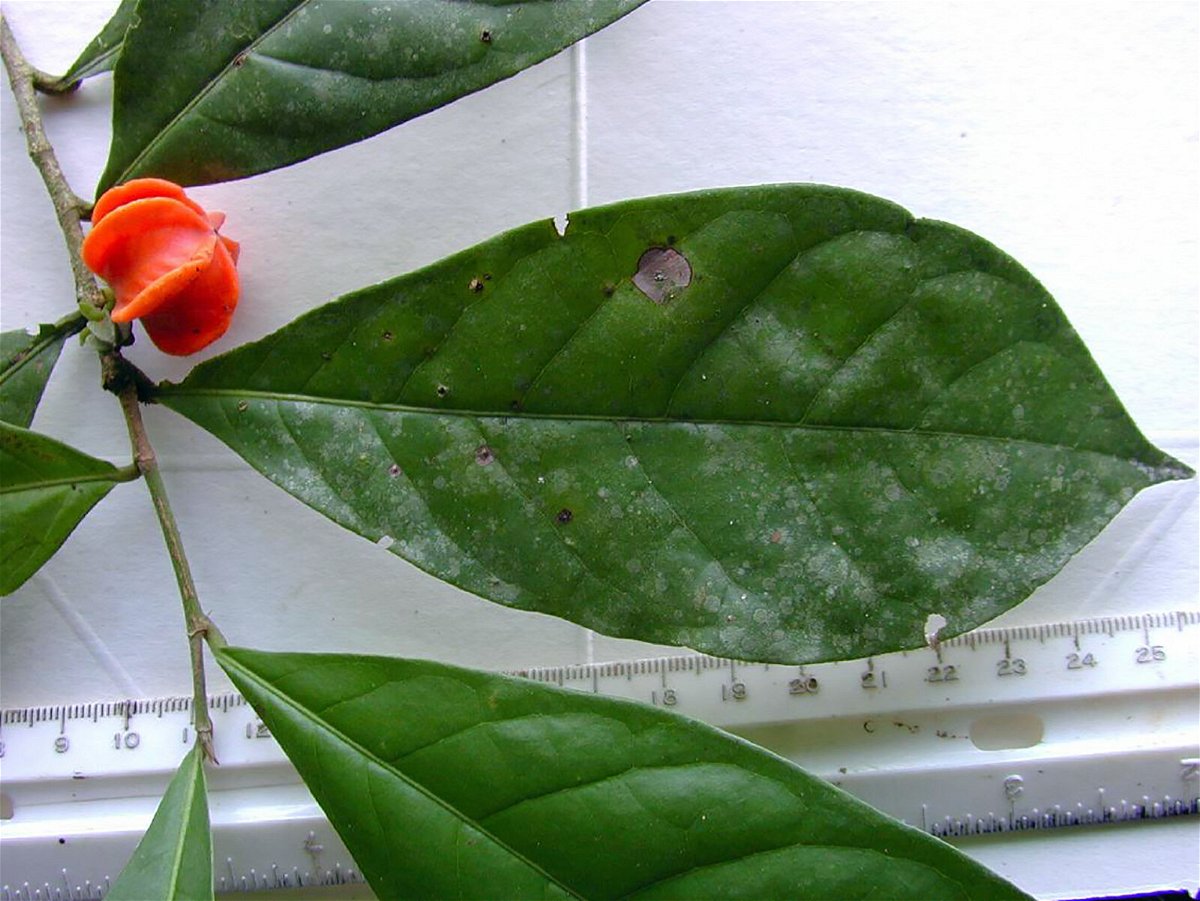Why it took nearly 50 years for scientists to name this mysterious tropical plant

The bright orange fruit tastes sweet and creamy
By Megan Marples, CNN
After nearly half a century, the mystery of Manu is finally solved.
In 1973, scientist Robin Foster discovered a plant with bright orange fruit shaped like paper lanterns inside Peru’s Manu National Park.
It’s now been classified as Aenigmanu alvareziae, or Mystery of Manu, according to a paper authored by Foster and published Wednesday in the journal Taxon.
Foster collected samples of the colorful tree on his trip to show to other researchers, and no one could identify the specimen.
The plant’s characteristics could place it into multiple families, one of the classification levels of plants, said Foster, a retired curator at Chicago’s Field Museum and a researcher with the Smithsonian Tropical Research Institute.
“Usually, I can tell the family by a quick glance, but damned if I could place this one,” Foster said in a statement.
It took decades of research to classify the tropical plant because it couldn’t be delivered to the correct specialist — because scientists didn’t know which family it belonged to, said study author Nancy Hensold, a tropical plant scientist at Chicago’s Field Museum.
A research team at the Field Museum attempted to analyze the plant’s DNA, but the dried specimen made it impossible to do so, Hensold said. DNA testing doesn’t work on some dried material, she noted.
“It has to do with the peculiar chemistry of each species whether the DNA is well-preserved enough, or breaks down too quickly,” she said.
Fortunately, Patricia Álvarez-Loayza, a scientist at Manu National Park, collected fresh samples in 2015 for the team to analyze at the Field Museum.
They discovered the plant was a part of the Picramniaceae family, which is a small family of plants from the Western hemisphere tropics and subtropics, Hensold said.
The length of time it took for this plant to be classified is unusual, said Martin Cheek, senior research leader in the accelerated taxonomy department at the Royal Botanic Gardens in London. He was not involved in the study.
It typically takes five to 15 years for a plant to be classified, but it can take anywhere from six months to 200 years, he said.
Until a plant is classified, it does not exist, at least not scientifically, Cheek said. Once it’s classified, scientists can assess the species’ extinction risk and take steps to protect it if necessary, he explained.
In the case of Aenigmanu alvareziae, additional research can also be done on the plant’s properties.
“Now it is classified in Picramniaceae, we know to look for secondary compounds of potential use as anti-cancer drugs, which are a feature of this family,” he said.
Although the plant has cute orange fruit growing on its branches, it likely won’t become a food source for humans, Hensold said. The plant’s seeds are quite large, so there isn’t enough flesh for it to be an important food source, she noted.t
While Hensold said she hasn’t tasted the fruit, she heard from Álvarez-Loayza that it tastes “sweet and creamy.”
Now that the plant is visible to the larger scientific community, researchers may find out it is more common than originally believed, Hensold said. She found one specimen from the Rio Jurua basin in Brazil.
“Hopefully other botanists from South America will recognize this plant among their own unidentified specimens and let us know,” she said.
The-CNN-Wire
™ & © 2021 Cable News Network, Inc., a WarnerMedia Company. All rights reserved.